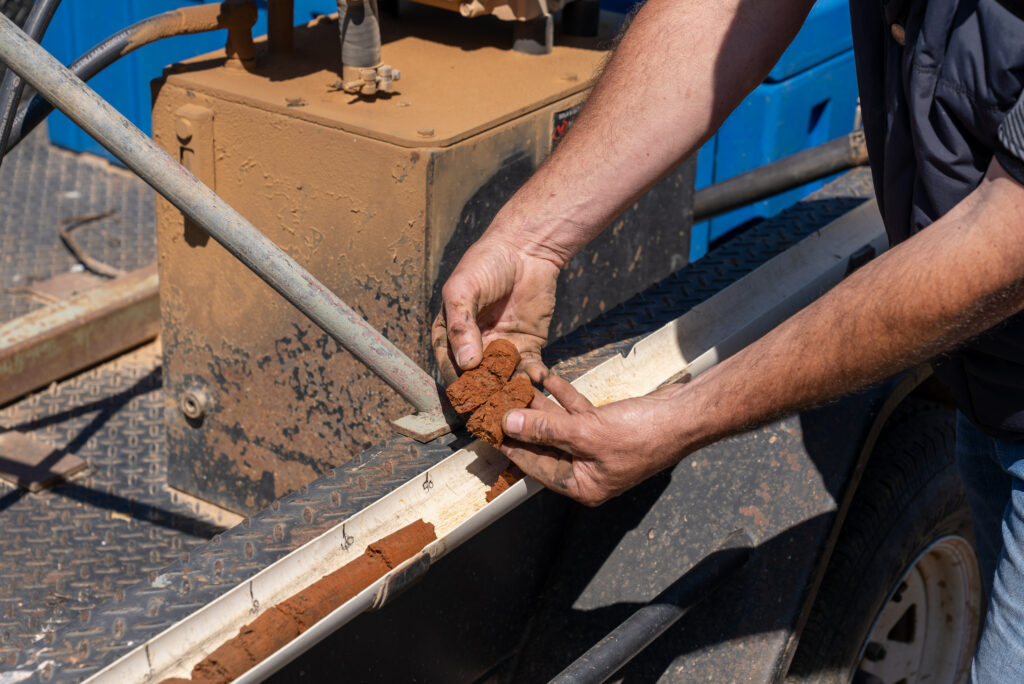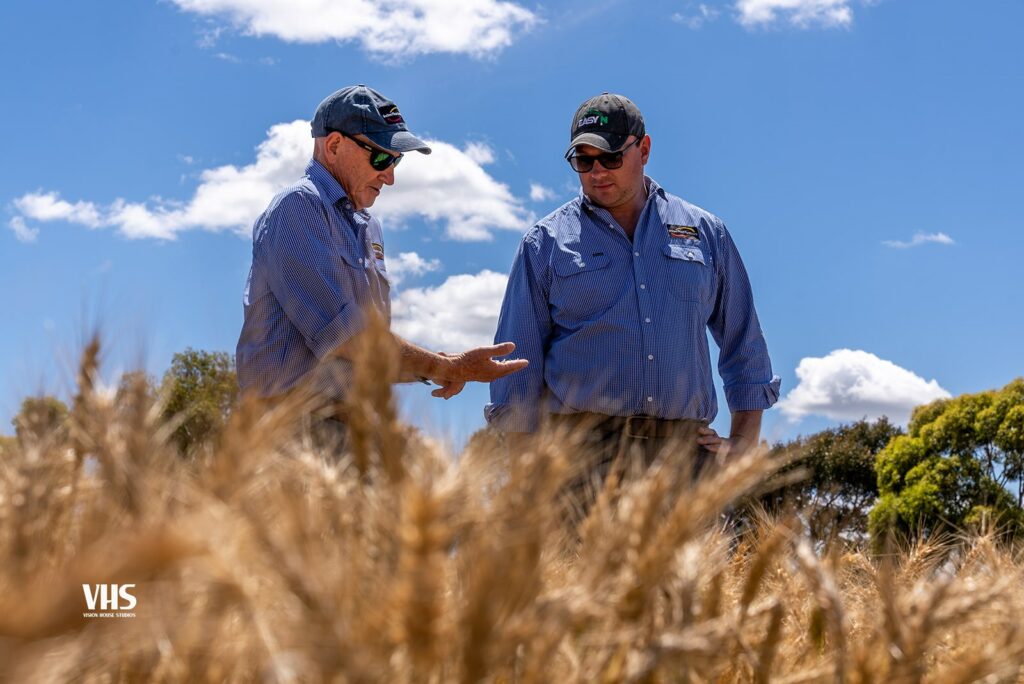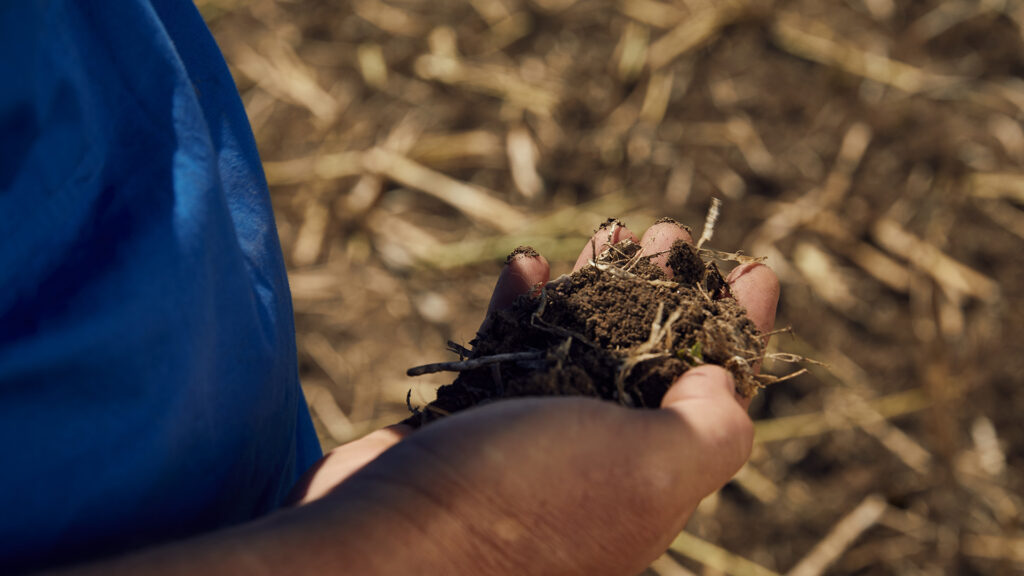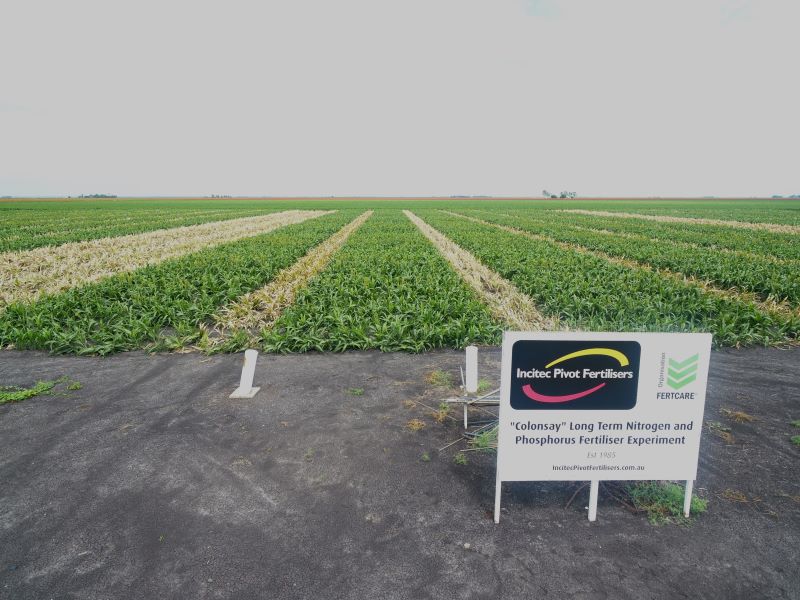Agronomic Insights

Deep and meaningful: Deep soil testing can help take the guesswork out of your nutrient plan
07 July 2023
Clint Sheather – IPF Technical Agronomist
We know that nutrient removal has been high in the last few seasons and that this year there is greater potential for nutrient loss – especially mobile nutrients such as nitrate nitrogen and sulphate sulphur.
So, deep soil testing in-crop can help:
- understand current nutrient levels and where mobile nutrients reside in the soil profile.
- set and maintain yield and quality targets based on seasonal conditions.
- understand the ‘N’ bank – what’s left and at what depth?
What to consider when in-crop soil testing?
Deep soil tests are generally taken to 60 cm or 90 cm which can provide irregular results so why not take a segmented sampling approach? Segmented sampling (0-10, 10-30, 30-60, 60-90 cm) is useful to determine where mobile nutrients are distributed within the soil profile. This will help devise a fertiliser strategy to make sure the right nutrients are available when and where the crop needs them.

Crop species vary in their ability to obtain nutrients from soils. Root densities change as crop development progresses. Take wheat for example. Typically, wheat roots explore the upper part of the soil profile until stem elongation, before increasing the amount of soil explored through to flowering. If yield potential has not set through enough tillers or plants, then nitrogen applications may need to be brought forward. If nitrogen is available at depth, crops can either utilise it to maximise protein or it can be carried over from season to season, increasing the N bank.
As an indeterminate flowering plant, canola can access nutrients at depth, meaning nutrients can be accessed throughout the season which can reduce the amount of nitrogen available to the following crop.
So, understanding the rooting depth of different winter crop cultivars and agronomic effects such as sowing time can have a significant bearing on nutrient management.
What tools to consider when developing a sampling plan?
The more tools you have, the better equipped you are. These tools include:
- Previous yield & protein maps.
- Previous year’s NDVI imagery.
- Paddock information such as sowing date, row space and the type of seeding equipment used.
- Fertiliser application, year to date.
- Stubble management, and potential effect of either mineralisation or immobilisation.
How often do you need to deep soil test?
Sampling isn’t required every year to make fertiliser decisions, although it is useful. Historic farm records and often provide enough information to assist in making fertiliser decisions. Strategically sampling paddock across a farming sequence will provide the best results.
Deep mobile nutrients may not always be accessible.
Approximately 60% of arable land across south-eastern Australia is affected by some form of chemical or physical soil constraint. Where subsurface constraints occur, the ability of plant roots to access mobile nutrients will be limited. Therefore, alternative nutritional management strategies may need to be developed.
Deep soil testing isn’t just about this year’s crop but is essential to monitor the ‘N’ bank.
It’s important to soil test to monitor the ‘N’ bank and can be done before sowing and throughout the season. Maintaining the N bank is all about ensuring that a base level of nitrogen is maintained where loss potential is low. Using an ‘N’ bank strategy ensures the crop is not deficient of nitrogen and residual nitrogen is carried into the following year without losses accruing.
Take home messages
Deep soil testing is critical in monitoring the N ‘bank’.
- Use all the available tools to make better fertiliser decisions.
- Segmented sampling can provide additional information to tailor your N & S strategy.
- Previous crop performance can provide useful information when planning sampling.
- Understand any subsoil limitations that are affecting nutrient availability.
Further Information
For additional information or advice feel free to contact me on 0475 439 316 orclint.sheather@incitecpivot.com.au.
You can also contact:
- Jim Laycock 0427 006 047; jim.laycock@incitecpivot.com.au
- David McRae 0477 987 321; david.mcrae@incitecpivot.com.au
References
Flohr, B. M., Hunt, J. R., Kirkegaard, J. A., Rheinheimer, B., Swan, T., Goward, L., Evans, J. R. & Bullock, M. (2020). Deep soil water-use determines the yield benefit of long-cycle wheat. Frontiers in Plant Science, 11, 548.
Hunt J. (2020) Managing nitrogen for high crop yields and sustainable farming systems. Grain Research and Development Cooperation,Resources and publications, GRDC Update Papers.
Hunt, J., Kirkegaard, J., Maddern, K., & Murray, J. (2021). Strategies for long term management of N across farming systems. GRAINS RESEARCH UPDATE, 147.
Kirkegaard, J. A., & Lilley, J. M. (2007). Root penetration rate–a benchmark to identify soil and plant limitations to rooting depth in wheat. Australian Journal of Experimental Agriculture, 47(5), 590-602.
Resources
DOWNLOAD INSIGHTDISCLAIMER
This is a guide only, which we hope you find useful as a general tool. While IPF has taken all reasonable care in the preparation of this guide, it should not be relied on as a substitute for tailored professional advice and IPF accepts no liability in connection with this guide. Incitec Pivot Fertilisers manufactures and sources fertilisers from other suppliers. The fertiliser supply chain extends beyond the company’s direct control, both overseas and within Australia. Incitec Pivot Fertilisers hereby expressly disclaims liability to any person, property or thing in respect of any of the consequences of anything done or omitted to be done by any person in reliance, whether wholly or in part, upon the whole or any part of the contents of this article.
You might also be interested in these

Winter Crop
Strategies for optimising nitrogen use efficiency for challenging seasons
June / 2023

Horticulture, Pasture, Summer Crop
At risk of nitrogen volatilisation? Test your soil before choosing a fertiliser product when broadcasting
February / 2023

Summer Crop
Prevent nitrogen loss: Test your soil before broadcasting
February / 2025

Summer Crop
Summer crop 23-24: Nutrient strategies and lessons from last season
August / 2023

